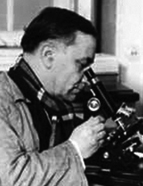

35-36); while maintaining the overall shape of the curve suggested by Schneider, he adds some criticisms, for example emphasising that architecture “is the most complete and definite expression of a civilisation” and speaking of “coordinates defined by the energetic manifestations of the System” (Idem, p. 40); the plausibility of the model, with a three-phase curve (like a Portuguese roof tile seen in profile), is no greater than that of Schneider’s model and results from the vital analogy (since it does not present concretely determined quantified variables); Further on, he will speak of chains of curves, that is, of the articulation of civilisations, giving as an example the succession of Aegean-Greece-Rome-Europe (Idem, p. 45).
AS believes that scientific development, then marked by the revolutions of relativity and quantum theory (and by the new Viennese scientific philosophy of logical empiricism), is a clear sign that, above the life cycles of civilisations, there is a clear technological and scientific progress, which he integrates into what he calls the ‘totalisation of experience’, that is, the entire positive accumulation of humanity throughout its long history. Curious is the characterisation of the phase of decline, illustrated by the fall of Rome, described in deterministic terms: “The mechanistic processes of decay are clearly visible here; forces at play act blindly in action and reaction, and in such a way that, whatever the will of men, everything will happen according to fatal laws, even giving rise to the apparent paradox that the very action of men, directed in a certain direction, contributes precisely to making things move in the opposite direction. For this action, independent of its ideal, is only a force that is integrated into a system of forces at play and enters into conflict with them” (Idem, p. 65); Among the characteristics that are signs of this third period, he highlights: “the mystical dissolution of thought, the weakening of the scientific spirit and the hegemony of religious emotionality”, noting that they are “currently in the prelude to the decline of Europe” (Idem, p. 67).
This work is financed by national funds through FCT - Foundation for Science and Technology, I.P, in the scope of the projects UIDB/04311/2020 and UIDP/04311/2020.
